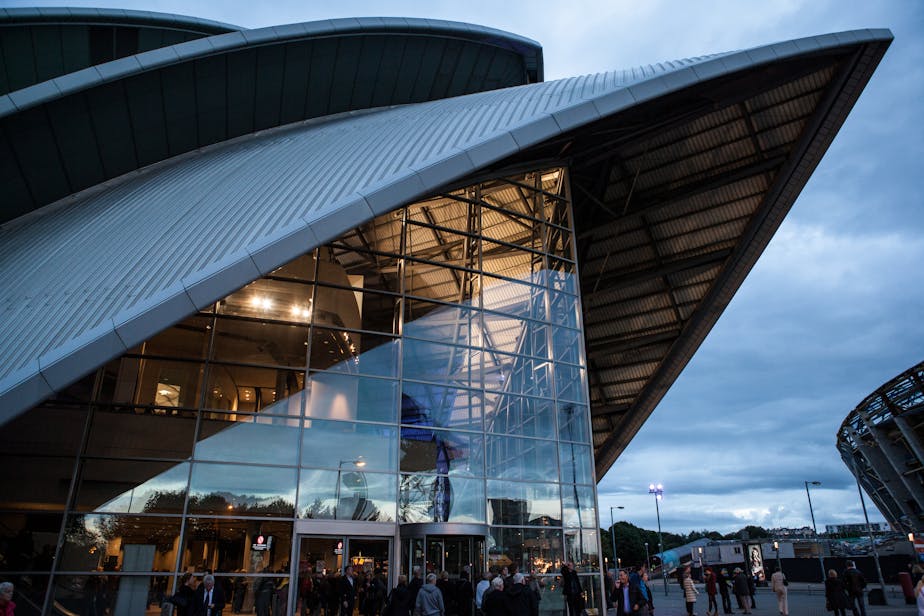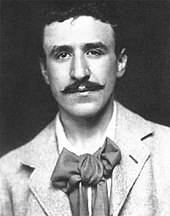My two days in Glasgow were excellent. You have already seen how good my hotel was, which is very important for getting work and rest done. It is located in what seemed to be the theater district and I quickly felt at home there: getting groceries at Marks & Spencer a couple blocks down the road; stopping for sandwiches at Pret a couple blocks in the other direction; and seeing dressed-up people crowd the sidewalks for a show at the Pavilion Theater every evening on my way home. And although Glasgow has a more industrial, working-class reputation when compared with Edinburgh, I found it to be clean, sophisticated, and artsy. It also felt very safe for a woman traveling alone, including after dark. Given all that plus the amount of things to see, I could have happily stayed for several more days.
Glasgow was also a much prettier city than I remember from brief earlier visits. Besides the grand architecture of George Square, the modern works of Charles Rennie Mackintosh that are scattered around the city, and the ultra-modern structures along the river, the dominant style is probably Georgian - a refined, classical style most associated with Bath (although Bath has the advantage of much prettier stone) and Edinburgh's New Town. Medieval buildings are few and far between in Glasgow, but the Gothic cathedral is a notable exception.
The only downside to Glasgow I can think of was the amount of people. It the largest city in Scotland, and although that may not be saying much, it did feel quite crowded on the sidewalks and pedestrianized areas - especially on Saturday (pictured above, when I was additionally wheeling a suitcase to the train station). But it's hardly New York, and it wasn't much worse than the Royal Mile in Edinburgh in the summer or Oxford most anytime, and it wasn't a major inconvenience.
So, here are the photographic highlights I've managed to assemble in the limited time I have!
A Walk Along the River Clyde
The day I arrived in Glasgow from the USA, after a nice nap to take the edge off the jet lag, I went out to explore a little. I intended to just nose around George Square and various locations near my hotel, but I kept wanting to "just see what was around the next corner..." until I ended up walking down to the River Clyde and then along an excellent riverside path for quite awhile. I got a couple miles away from my hotel, it began to get dark and cold, and once I stopped taking pictures I remembered how very tired I was, so I took a cab back. I lucked out in ending my walk at the Clyde Auditorium, because taxis were arriving in droves to bring people to a show! I'm glad I went as far as I did that first night, because I didn't have time to get down there another day. Here are few photos from my riverside walk.
 The "Clyde Arc", a road bridge completed in 2006, and a glimpse of the excellent walking/biking trail that runs along both sides of the river for a long distance.
The "Clyde Arc", a road bridge completed in 2006, and a glimpse of the excellent walking/biking trail that runs along both sides of the river for a long distance.
 Closer look at the Clyde Arc, which was more like the "Clyde Circle" in the evening reflections.
Closer look at the Clyde Arc, which was more like the "Clyde Circle" in the evening reflections.

 The Tradeston Bridge, a pedestrian bridge completed in 2009.
The Tradeston Bridge, a pedestrian bridge completed in 2009.
 Some interesting structures, which I haven't identified yet, next to BBC Scotland
Some interesting structures, which I haven't identified yet, next to BBC Scotland
One of the main reasons I kept going farther down the river was to see Clyde Auditorium, which is nicknamed "The Armadillo" for reasons that will become obvious. I'm not a big fan of this one - it really does look an armadillo, or a pillbug - but it's certainly interesting, and I am a fan of the architect, Lord Norman Foster. Apparently the actual inspiration behind the shape is ships' masts, to represent Glasgow's shipbuilding heritage.






I do like the front part of the building, shown in the last couple of photos. This is where I got my taxi. The driver curiously asked, "So why is everyone coming and you're going?" That's me, marching to a different drummer.
George Square
George Square is the main historical and political square in Glasgow, where many of the city office buildings are located and protests are usually held. It is surrounded by grand old buildings and filled with monuments to various Scottish luminaries and a war memorial. Unfortunately during my visit, half the square was fenced off and a large white tent was erected for some event or another.
 Glasgow City Chambers and war memorial (note mounted police)
Glasgow City Chambers and war memorial (note mounted police)
 Chamber of Commerce building on the opposite side of the square
Chamber of Commerce building on the opposite side of the square
Charles Rennie Mackintosh
 This handsome devil is Charles Rennie Mackintosh (1868-1928), an architect who was born in Glasgow and worked there for most of his career as an architect, interior designer, and artist. He not only designed buildings; he also designed the furniture, the sculpture, the lamps, the windows, the doors... you name it. And he painted landscapes, too. He was a modern Renaissance man.
This handsome devil is Charles Rennie Mackintosh (1868-1928), an architect who was born in Glasgow and worked there for most of his career as an architect, interior designer, and artist. He not only designed buildings; he also designed the furniture, the sculpture, the lamps, the windows, the doors... you name it. And he painted landscapes, too. He was a modern Renaissance man.
Style-wise, Mackintosh was part of the Arts and Crafts movement (which valued handmade, individually unique objects in reaction to the rise of factories and mass production by machines) and the Art Nouveau style (characterized by abstract designs inspired by nature), but he has a look all his own. It has been copied a lot - for example, you probably recognize the font on these door handles:
His wife, Margaret MacDonald Mackintosh, was also a talented artist and together they produced some really great stuff. He frequently signed both of their initials to artworks (CRM · MMM) so it is unclear where he ends and she begins, and who inspired who. Quite romantic.
Almost of all of Mackintosh's works are in Glasgow, including a few surviving buildings and lots of furnishings in museums. The most important Mackintosh sight is the Mackintosh Building at the Glasgow School of Art, which he designed and decorated. It is still a working art school, but they offer tours daily, led by current students. This was on my must-list, and I joined the 11am tour on Friday.
I absolutely loved the Mackintosh Building. I had previously liked what I'd seen of his work in books and pictures, but getting to see it in person, and as a cohesive whole - pretty much everything you look at was handmade by him or his wife - was the coolest. I wish I could show you more of what I saw, but photography is sadly prohibited throughout the tour. So here are some highlights of the exterior and the public areas of the interior.
 West and south facades. The tall windows are those of the library, which was the best part. The students still get to use it, lucky devils.
West and south facades. The tall windows are those of the library, which was the best part. The students still get to use it, lucky devils.
 A bee, one of a series of iron decorations depicting different abstract insects
A bee, one of a series of iron decorations depicting different abstract insects
 Iron brackets on the north side windows
Iron brackets on the north side windows
 Sculpture over the entrance (hidden behind the square lamp in the previous photo)
Sculpture over the entrance (hidden behind the square lamp in the previous photo)
 Foyer, from just inside entrance. The little room on the left in the back is inspired by a Japanese lantern and is so very cool. When it's lit up, the light shines through the windows just like a lantern.
Foyer, from just inside entrance. The little room on the left in the back is inspired by a Japanese lantern and is so very cool. When it's lit up, the light shines through the windows just like a lantern.
 Somewhat similar windows, which are part of the main door on the east side.
Somewhat similar windows, which are part of the main door on the east side.
 Interior window and tile design. The main material is "Glasgow marble", a.k.a. polished concrete! But he made a cheap material look beautiful and interesting. Those tile designs appear throughout the stairwells and each one has differently colored tiles and patterns.
Interior window and tile design. The main material is "Glasgow marble", a.k.a. polished concrete! But he made a cheap material look beautiful and interesting. Those tile designs appear throughout the stairwells and each one has differently colored tiles and patterns.
Another important Mackintosh sight is the Willow Tearoom, which is just a couple blocks from the school on an otherwise unremarkable pedestrian street. I actually had tea here 12 years ago(!), when I was studying at Edinburgh and went on a day trip to Glasgow with a friend who was interested in Mackintosh. I wasn't all that interested in art in general at that time, so I didn't properly appreciate it - although I thought it was very pretty and the sandwiches were delicious! I had hoped to revisit it this time, but unfortunately ran out of time. So here are some exterior details of the second-floor "Room de Luxe":
Glasgow Cathedral
On the day I left Glasgow, I had to check out of the hotel by 11, but they stored my luggage for me so I could take an extra hour or two and check a few more sites off my photo list before heading to Liverpool (since I also walked all over Liverpool when I got there, this made for a very long day and very tired feet!). The main one I'm glad I didn't miss is Glasgow Cathedral, which in contrast to the Georgian, Victorian and modern architecture elsewhere in the city, is a dark and highly atmospheric Gothic building.
 That's David Livingstone in the foreground.
That's David Livingstone in the foreground.
Part of the reason I ran out of time to see everything on my list in Glasgow is that I spent one of my two afternoons on a day trip to Stirling Castle, which was excellent. I'll try to share photos of that soon... For now, good night!


















